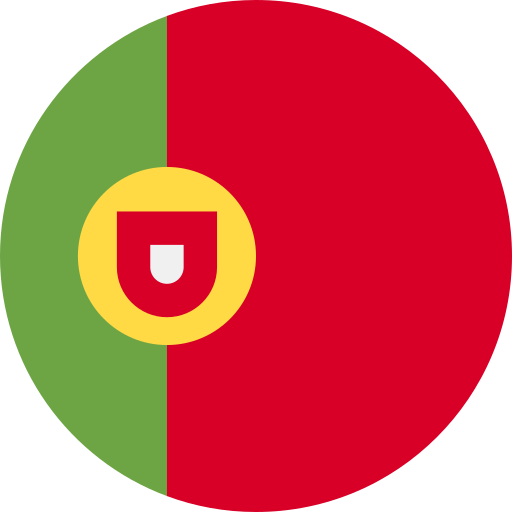Key Takeaways
- Historical Evolution: The Portuguese language originated from Vulgar Latin around 200 BC and has transformed significantly, influenced by various cultures and historical events over the centuries.
- Cultural Influences: Arabic, indigenous languages, and regional dialects have enriched Portuguese vocabulary and pronunciation, reflecting Portugal’s maritime history and global interactions.
- Phonetic Changes: Sound changes began in the 9th century as vowels diphthongized; subsequent influences introduced new consonant sounds that shaped modern pronunciations across different regions.
- Grammatical Developments: Early flexible word orders evolved into a more fixed structure due to standardization in writing, while classical texts during the Renaissance refined grammatical rules further.
- Literature’s Impact: Key literary works like “Os Lusíadas” elevated Portuguese literature’s status and contributed to national identity while enriching the language itself through expressive vocabulary.
- Global Spread: Today, Portuguese is spoken globally with distinct variations in countries such as Brazil, Mozambique, and Goa, showcasing its adaptability while maintaining core characteristics.
Ever wondered how the Portuguese language evolved into what it is today? From its roots in Latin to becoming a global tongue spoken across continents, Portuguese has undergone fascinating transformations over centuries.
Historical Overview of the Portuguese Language
The Portuguese language has a rich history, showcasing its evolution from Latin to a global tongue spoken by millions. Understanding this journey provides insights into its unique characteristics and cultural significance.
Origins of the Language
Portuguese originated from Vulgar Latin, brought to the Iberian Peninsula by Roman soldiers and settlers around 200 BC. By the 9th century, it began developing distinct phonetic and grammatical features, diverging from other Romance languages. The earliest written records date back to the 12th century with documents like “A Cantiga da Ribeirinha.” This foundational period set the stage for what would become a diverse linguistic landscape.
Influence of Other Languages
Various cultures shaped Portuguese over centuries. Arab influence is evident in vocabulary related to science, architecture, and agriculture due to nearly 800 years of Moorish presence. Additionally, interactions with indigenous languages during explorations in Africa, Asia, and South America introduced new words and expressions. This blend created a rich lexicon that reflects Portugal’s maritime history and global connections.
Through these influences, Portuguese emerged as a dynamic language capable of adapting while maintaining its core identity.
Major Phases of Development
Portuguese has undergone significant evolution throughout its history, influenced by various cultures and linguistic changes. Each phase marks a crucial step in shaping the language you recognize today.
The Early Forms of Portuguese
The early forms of Portuguese emerged from Vulgar Latin around 200 BC. As this form spread across the Iberian Peninsula, local dialects began to develop. By the 9th century, these dialects exhibited unique phonetic and grammatical features that distinguished them from other Romance languages. Notably, the influence of regional languages enriched early Portuguese vocabulary, laying a foundation for its future development.
Portuguese in the Middle Ages
During the Middle Ages, roughly from the 12th to the 15th centuries, Portuguese gained prominence as a written language. The first known texts appeared in this period, reflecting daily life and culture. This era also saw significant Arabic influences due to Moorish occupation; many words related to science, agriculture, and architecture entered everyday usage. The establishment of Portugal as an independent kingdom further solidified Portuguese’s status among European languages.
The Age of Exploration and Colonial Influence
The Age of Exploration marked another pivotal moment for Portuguese between the 15th and 17th centuries. As explorers ventured across continents, they encountered diverse cultures and languages. This interaction led to borrowing terms from indigenous languages in Africa, Asia, and South America—expanding the lexicon significantly. Moreover, as colonization spread Portuguese into new territories like Brazil and parts of Africa, it adapted locally while maintaining core characteristics.
These phases illustrate how historical events shaped not just a language but also cultural identity through centuries of transformation.
Linguistic Changes Over Time
Portuguese has undergone significant transformations over the centuries, reflecting historical events and cultural exchanges. These changes encompass phonetic evolution and grammatical shifts that have shaped the language into what it is today.
Phonetic Evolution
Phonetic evolution in Portuguese highlights major sound changes. Early forms of Portuguese displayed a strong Latin influence, yet distinct sounds emerged as the language evolved. By the 9th century, vowels began to diphthongize, giving rise to unique pronunciations not found in other Romance languages. For example, the Latin “a” transformed into “e” or “ei,” altering words like “casa” (house) to reflect local speech patterns.
The Middle Ages introduced further phonetic modifications due to Arabic influences during Moorish rule. This period saw the introduction of new consonant sounds and vocabulary related to science and culture. The incorporation of these elements enriched phonetics while maintaining core Latin roots.
In modern times, regional accents continue to evolve, with variations across Portugal, Brazil, and African nations speaking Portuguese. These regional accents showcase how pronunciation adapts within different cultural contexts while still being recognizable as part of the broader Portuguese linguistic family.
Grammatical Shifts
Grammatical shifts in Portuguese reveal how syntax and structure adapted over time. Initially influenced by Vulgar Latin grammar rules, early Portuguese featured a more flexible word order compared to its present-day form. As writing became standardized from the 12th century onwards, a more fixed subject-verb-object order emerged.
During the Renaissance period, an influx of classical texts encouraged scholars to refine grammatical structures further. This era introduced new verb conjugations and tenses that expanded expression capabilities within literary works.
Modern Portuguese maintains many historical grammatical features but has simplified certain aspects for ease of communication. For instance, you may notice that formal distinctions between second-person pronouns have relaxed in everyday conversation among speakers today.
These ongoing linguistic changes illustrate how external factors—like colonization or cultural exchange—contribute significantly to shaping language identity over centuries while retaining essential characteristics inherent in its origins.
The Role of Literature and Culture
Literature and culture significantly shaped the development of the Portuguese language over centuries. They influenced vocabulary, syntax, and even pronunciation, marking important milestones in its evolution.
Key Literary Works
Key literary works played a pivotal role in establishing Portuguese as a prominent written language. The “Cancioneiro Geral,” compiled in the 16th century, showcased poetic forms that reflected social issues and everyday life. Similarly, Luís de Camões’ epic poem “Os Lusíadas,” published in 1556, elevated the status of Portuguese literature internationally by celebrating exploration and national identity. These foundational texts not only enriched the lexicon but also fostered pride in linguistic heritage across generations.
Impact of Portuguese Culture
Portuguese culture profoundly influenced its language through traditions, music, and art. Fado music embodies emotion and storytelling while incorporating unique vocabulary that conveys complex feelings tied to nostalgia or longing. Regional customs also introduced local dialects into mainstream usage, further diversifying how Portuguese is spoken today. Festivals celebrating these cultural elements often feature oral storytelling that hones linguistic skills while preserving historical narratives.
In essence, literature and culture have been instrumental in shaping the Portuguese language’s trajectory from its Latin roots to becoming a vibrant means of expression globally. Each cultural artifact contributes layers to this dynamic linguistic tapestry, ensuring it remains relevant across various contexts.
The Global Spread of Portuguese
Portuguese has spread across the globe, becoming a vibrant language spoken in diverse regions. Its journey showcases how historical events and cultural exchanges have influenced its development.
Portuguese in Africa and Asia
In Africa, Portuguese emerged as a result of colonization, establishing itself in countries like Mozambique, Angola, and Guinea-Bissau. These nations adopted the language while infusing it with local dialects and vocabulary. Consequently, variations of Portuguese developed that reflect unique cultural identities. In Asia, particularly in places like Goa (India) and East Timor, Portuguese left a lasting impact through centuries of trade and interaction. Here too, you’ll find distinct dialects enriched by indigenous languages.
Portuguese in the Americas
The most significant influence of Portuguese outside Europe occurred in Brazil. As colonizers arrived in the 16th century, they brought their language with them. Over time, Brazilian Portuguese evolved differently from its European counterpart due to African influences from enslaved populations and indigenous languages blending into everyday speech. This evolution created a rich tapestry of accents and expressions unique to Brazil while retaining core elements from Portugal.
Through these journeys across continents—Africa’s coastal regions to South America’s vast landscapes—Portuguese transformed continuously. It adapted to new environments while preserving its roots, making it one of the most widely spoken languages worldwide today.
Conclusion
The journey of Portuguese showcases its resilience and adaptability across centuries. From its Latin roots to the vibrant global language it is today, each phase reflects cultural exchanges and historical influences that have enriched its development.
As you explore Portuguese in various regions you’ll find unique dialects that embody local traditions while maintaining core characteristics. This dynamic nature not only enhances the beauty of the language but also highlights its significance in connecting diverse cultures around the world.
Embracing this linguistic heritage offers a deeper understanding of both past and present, revealing how Portuguese continues to evolve while celebrating its rich history.
Frequently Asked Questions
What is the origin of the Portuguese language?
Portuguese originated from Vulgar Latin, which was brought to the Iberian Peninsula around 200 BC. Over centuries, it evolved with influences from local dialects and regional languages, developing distinct phonetic and grammatical features by the 9th century.
How did Arabic influence Portuguese?
During the Middle Ages, particularly due to nearly 800 years of Moorish presence in Portugal, many Arabic words related to science, agriculture, and architecture entered the Portuguese vocabulary. This influence significantly shaped its development as a written language.
When did Portuguese become a prominent written language?
Portuguese gained prominence as a written language during the Middle Ages (12th to 15th centuries). The first known texts from this period reflect daily life and culture, marking an important phase in its literary history.
How did exploration affect the Portuguese language?
The Age of Exploration (15th to 17th centuries) led to significant borrowing from indigenous languages encountered by explorers in Africa, Asia, and South America. This expansion enriched the lexicon while spreading Portuguese across new territories like Brazil.
What are some key changes in modern Portuguese?
Modern Portuguese has undergone phonetic evolution and grammatical shifts over time. These include diphthongization of vowels by the 9th century and a transition towards a standardized subject-verb-object order for clarity in communication.
How has literature impacted the Portuguese language?
Key literary works like “Cancioneiro Geral” and Luís de Camões’ “Os Lusíadas” have established pride in linguistic heritage. Literature has played a crucial role in shaping written standards while reflecting cultural emotions through poetry and storytelling traditions.
Where is Portuguese spoken today?
Portuguese is spoken globally due to historical events such as colonization. It thrives in regions like Brazil, Mozambique, Angola, Guinea-Bissau, Goa, and East Timor with unique variations influenced by local dialects and indigenous languages.
Why is Brazilian Portuguese different from European Portuguese?
Brazilian Portuguese evolved uniquely due to significant African and indigenous influences during colonization. This created diverse accents and expressions that distinguish it from European Portuguese while preserving core elements of the language’s roots.







